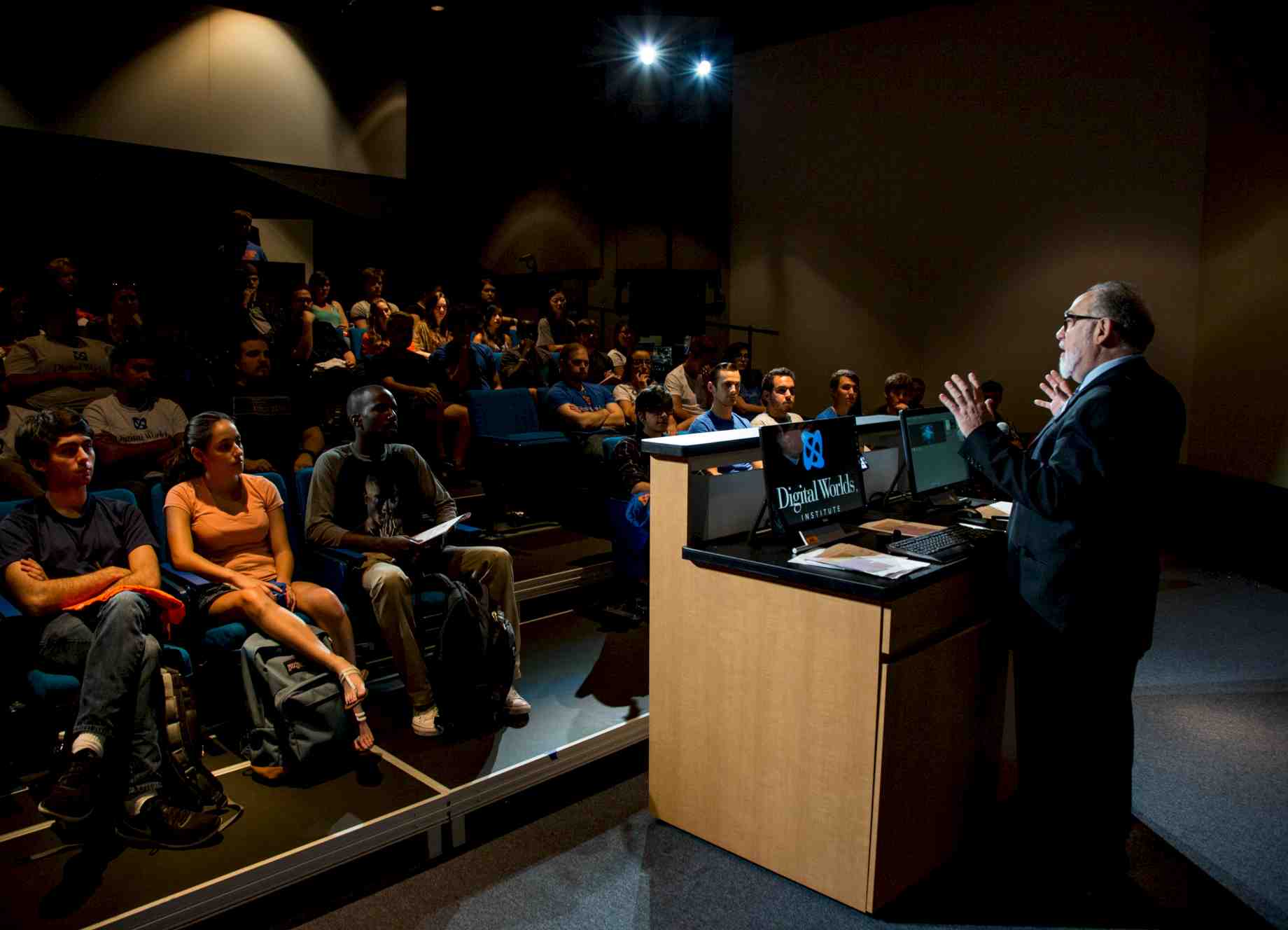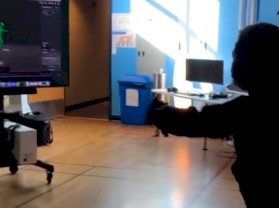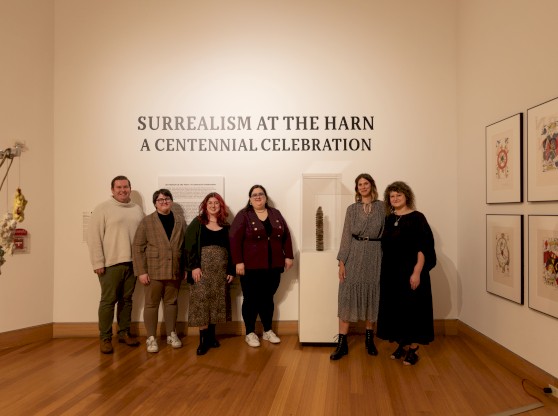Oliverio explained that DW is an interdisciplinary entity by definition. Instead of honing in on a single traditional academic subject, students become fluent in a wider variety of convergent fields.
“Digital Worlds is at the intersection of the arts, technology and communications,” he said.
Throughout the school year, students will have the opportunity to gain new skills, create exciting projects and participate in research that could help them discover new passions, Oliverio said. He hopes students will collaborate to understand others’ perspectives and expand their views.
On the first day of the fall semester, University of Florida Digital Worlds Institute students filtered into the institute’s high-tech auditorium.
There was a buzz of anticipation as they chatted with their classmates and waited for the start of convocation. Many had already donned their new Digital Worlds T-shirts — orange for new undergraduate students, blue for second-years and white for graduate students.
The Class of 2018 is the largest to be admitted into the institute’s Digital Arts and Sciences (DAS) program, announced James Oliverio, the Digital Worlds (DW) director. This year marks the institute’s 15th anniversary.
At the convocation, students also met their professors and watched an ultra-widescreen video that introduced them to the building and interactive classrooms. The video’s animation zoomed around the room, lighting up the five screens that surround the audience in DW’s Polymodal Immersive Classroom Theatre, known as the PICT.
The video also highlighted some of Digital Worlds’ most important features — those allowing online students to interact with professors just as they would in a traditional classroom setting. The lecture videos at Digital Worlds are streamed live, and both students and professors have access to microphones, which allows online students to hear the lecture portion and student questions clearly. Additionally, students who stream in are projected as live webcam videos at both the front and back of the room, making it easy for them to interact with professors and classmates.
For Digital Arts and Sciences Student Michelle Raudsepp, 21, the best part of convocation was seeing her entire class sitting together. She also liked the video, which she said showcased the institute’s work and gave new students an introduction to their professors.
“The video itself helps (new students) see what the program is capable of,” Raudsepp said.



